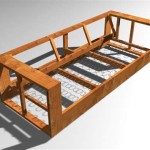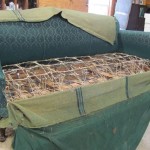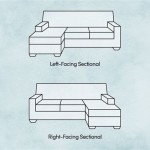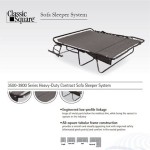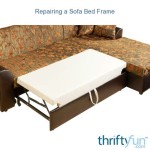Daybeds That Look Like Sofas: Blending Comfort and Versatility
Daybeds, traditionally associated with leisure and relaxation, have evolved significantly in design, functionality, and aesthetic appeal. The modern iteration often blurs the line between a daybed and a sofa, offering a versatile furniture piece that can seamlessly integrate into various living spaces. Daybeds that resemble sofas provide the comfort of a traditional sofa with the added benefit of serving as an occasional sleeping space, making them a practical and stylish choice for apartments, guest rooms, home offices, or any area where space optimization is key.
The market offers a wide array of daybeds designed to mimic the appearance and feel of sofas. These models frequently incorporate features such as upholstered backs, armrests, and deep seating, effectively mimicking the traditional sofa form factor. Material choices range from luxurious velvets and supple leathers to durable linens and practical microfiber, catering to diverse preferences and lifestyles. Furthermore, the design spectrum spans from minimalist modern aesthetics to classic, ornate styles, ensuring compatibility with different interior design schemes.
Functionality and Versatility
The primary appeal of a daybed that resembles a sofa lies in its adaptability. During the day, it functions as a comfortable seating area for lounging, reading, or entertaining guests. The sofa-like design encourages social interaction and provides ample space for relaxation. Many models feature plush cushions and supportive frames, ensuring a comfortable seating experience comparable to that of a traditional sofa. The aesthetic integration achieved by mimicking sofa designs allows the daybed to blend harmoniously with existing furniture arrangements, maintaining a cohesive and stylish living space.
Beyond its seating function, the daybed readily transforms into a sleeping surface. This dual functionality is particularly beneficial in smaller homes or apartments, where maximizing space is crucial. Providing a comfortable and convenient sleeping option for guests eliminates the need for a dedicated guest room or an inflatable mattress. The transition from sofa to bed is often straightforward, involving the removal of back cushions or the extension of the frame. This ease of conversion makes the daybed a practical and user-friendly option for accommodating overnight visitors.
The versatility extends beyond seating and sleeping. Many daybeds offer integrated storage solutions, such as drawers or compartments beneath the frame. This storage space can be used to stow away bedding, pillows, blankets, or other household items, further contributing to space optimization and organization. Such integrated storage enhances the functionality of the daybed, making it a valuable asset in any living space.
Design Considerations and Styles
When selecting a daybed that looks like a sofa, several design considerations come into play. The overall aesthetic of the room should be taken into account to ensure that the daybed complements the existing décor. The size of the room and the available space will dictate the appropriate dimensions of the daybed. Larger rooms can accommodate more substantial models, while smaller spaces may require a more compact design.
The style options are extensive, ranging from contemporary minimalist designs to more traditional and ornate styles. Modern daybeds often feature clean lines, simple silhouettes, and neutral color palettes. These designs are ideal for contemporary interiors and offer a sleek and understated aesthetic. Conversely, traditional styles may incorporate features such as rolled arms, tufted upholstery, and decorative nailhead trim, adding a touch of elegance and sophistication to the room. Art Deco daybeds might incorporate curved silhouettes, geometric patterns, and luxury fabrics.
Material choices also play a significant role in the overall aesthetic and durability of the daybed. Upholstery materials such as leather, velvet, linen, and microfiber offer different textures, appearances, and levels of durability. Leather provides a luxurious and durable option, while velvet offers a soft and plush feel. Linen provides a breathable and natural option, while microfiber is known for its stain resistance and ease of cleaning. The choice of material should be based on personal preferences, lifestyle considerations, and the desired aesthetic.
Construction and Quality
The quality of construction is a critical factor to consider when purchasing a daybed. A well-constructed daybed will provide years of comfortable seating and sleeping, while a poorly constructed model may quickly deteriorate. The frame should be made of sturdy materials such as solid wood or metal to ensure stability and durability. The joinery should be strong and well-executed to prevent wobbling or creaking.
The upholstery should be securely attached to the frame and made of high-quality materials that can withstand regular use. The cushions should be filled with supportive materials such as high-density foam or down feathers to provide optimal comfort. The stitching should be even and consistent, indicating a high level of craftsmanship. Inspecting these aspects ensures the daybed's longevity and comfort.
The mattress, if included, should be of a suitable thickness and firmness to provide adequate support for sleeping. The mattress should be made of durable materials that can withstand repeated use. Consider the type of mattress (foam, innerspring, hybrid) and its suitability for your needs and preferences. A good quality mattress will contribute significantly to the overall comfort and usability of the daybed as a sleeping surface.
The hardware, such as hinges, screws, and bolts, should be made of durable materials that can withstand repeated use. The hardware should be properly installed and secured to prevent loosening or breakage. Checking the quality of the hardware ensures the overall stability and functionality of the daybed.
The foundation beneath the cushion also plays a crucial role. Slat systems, typically made of wood or metal, provide support and allow for airflow, preventing moisture buildup and prolonging the life of the cushions. A strong and well-designed foundation complements the mattress and cushion, contributing to a comfortable surface.
Ultimately, choosing a daybed that resembles a sofa requires careful consideration of functionality, design, and construction. By evaluating these factors, one can select a versatile and stylish piece of furniture that enhances the comfort and aesthetic appeal of any living space. Thoughtfully planned placement can transform underutilized areas, making these daybeds a valuable addition to the home.

Sofa Style Daybeds Nesting Place

Small Home Style The Sofa Daybed Katrina Blair Interior Design Modern Livingkatrina

Sofa Style Daybeds Nesting Place

How To Choose Between A Daybed Or Sleeper Sofa Pottery Barn

12 Of The Prettiest Daybeds For Sitting Sleeping And Lounging In Style Daybed Room Mattress Sofa Bed Queen

Small Home Style The Sofa Daybed Katrina Blair Interior Design Modern Livingkatrina

What Is A Daybed Modern Daybeds

15 Daybed Designs Perfect For Seating And Lounging Home Design Lover In Living Room

Sofa Style Daybeds Nesting Place

Large Aliki Daybed Island Living


